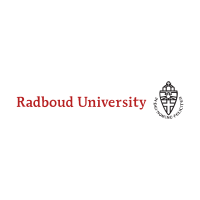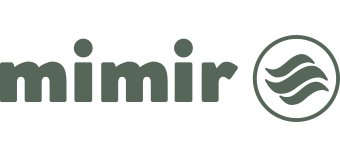
Jobs posted by Radboud Universiteit
Mimir provides the automated job management of jobs on job boards for Radboud Universiteit.
Latest jobs
Specialist financiële administratie
Samen met jouw collega’s zorg je voor volledige en juiste grootboekadministraties van de verschillende eenheden binnen de Radboud Universiteit. Ieder teamlid draagt individueel, maar soms ook gezamenlijk met collega's, de verantwoordelijk voor het grootboek van één aangewezen eenheid. Hiervoor sta je in nauw contact met de financial controller van de eenheid, wat bijvoorbeeld de Faculteit der Rechtsgeleerdheid kan zijn.
Om het werk soepel te laten verlopen, ben je regelmatig te vinden bij de eenheid waarvoor je verantwoordelijk bent. Je weet hier bij welke collega’s je de benodigde informatie kunt opvragen en ontvangt dit uit eerste hand. Daarnaast werk je samen in een hecht team van financiële administrateurs, ieder met eigen aandachtsgebieden. Jullie ondersteunen elkaar waar nodig binnen een informele en hechte werksfeer. Ondanks dat je je eigen verantwoordelijkheid draagt, staat het team altijd garant om elkaar te helpen.
Naast de verantwoordelijkheid voor de grootboekadministratie, voer je ook werkzaamheden uit voor de begroting, periodieke financiële rapportages en balansdossiers en de jaarrekening het balansdossier. Je verstrekt voornamelijk cijfermatige informatie en beantwoordt vragen over de financiële administratie. Je weet goed prioriteiten te stellen en vindt het leuk om, gevraagd en ongevraagd, bij te dragen aan de verbetering van de administratieve processen. Bij problemen, zet jij je schouders eronder, neem je initiatief en blijf je klantgericht.
Meer weten over hoe je als finance-professional bij de Radboud Universiteit impact kan maken? Bekijk de pagina over werken in finance.
19-12-2025 Radboud Universiteit
Specialist financiële administratie
Samen met jouw collega’s zorg je voor volledige en juiste grootboekadministraties van de verschillende eenheden binnen de Radboud Universiteit. Ieder teamlid draagt individueel, maar soms ook gezamenlijk met collega's, de verantwoordelijk voor het grootboek van één aangewezen eenheid. Hiervoor sta je in nauw contact met de financial controller van de eenheid, wat bijvoorbeeld de Faculteit der Rechtsgeleerdheid kan zijn.
Om het werk soepel te laten verlopen, ben je regelmatig te vinden bij de eenheid waarvoor je verantwoordelijk bent. Je weet hier bij welke collega’s je de benodigde informatie kunt opvragen en ontvangt dit uit eerste hand. Daarnaast werk je samen in een hecht team van financiële administrateurs, ieder met eigen aandachtsgebieden. Jullie ondersteunen elkaar waar nodig binnen een informele en hechte werksfeer. Ondanks dat je je eigen verantwoordelijkheid draagt, staat het team altijd garant om elkaar te helpen.
Naast de verantwoordelijkheid voor de grootboekadministratie, voer je ook werkzaamheden uit voor de begroting, periodieke financiële rapportages en balansdossiers en de jaarrekening het balansdossier. Je verstrekt voornamelijk cijfermatige informatie en beantwoordt vragen over de financiële administratie. Je weet goed prioriteiten te stellen en vindt het leuk om, gevraagd en ongevraagd, bij te dragen aan de verbetering van de administratieve processen. Bij problemen, zet jij je schouders eronder, neem je initiatief en blijf je klantgericht.
Meer weten over hoe je als finance-professional bij de Radboud Universiteit impact kan maken? Bekijk de pagina over werken in finance.
26 applications
0 views
19-12-2025 Radboud Universiteit
Specialist financiële administratie
Samen met jouw collega’s zorg je voor volledige en juiste grootboekadministraties van de verschillende eenheden binnen de Radboud Universiteit. Ieder teamlid draagt individueel, maar soms ook gezamenlijk met collega's, de verantwoordelijk voor het grootboek van één aangewezen eenheid. Hiervoor sta je in nauw contact met de financial controller van de eenheid, wat bijvoorbeeld de Faculteit der Rechtsgeleerdheid kan zijn.
Om het werk soepel te laten verlopen, ben je regelmatig te vinden bij de eenheid waarvoor je verantwoordelijk bent. Je weet hier bij welke collega’s je de benodigde informatie kunt opvragen en ontvangt dit uit eerste hand. Daarnaast werk je samen in een hecht team van financiële administrateurs, ieder met eigen aandachtsgebieden. Jullie ondersteunen elkaar waar nodig binnen een informele en hechte werksfeer. Ondanks dat je je eigen verantwoordelijkheid draagt, staat het team altijd garant om elkaar te helpen.
Naast de verantwoordelijkheid voor de grootboekadministratie, voer je ook werkzaamheden uit voor de begroting, periodieke financiële rapportages en balansdossiers en de jaarrekening het balansdossier. Je verstrekt voornamelijk cijfermatige informatie en beantwoordt vragen over de financiële administratie. Je weet goed prioriteiten te stellen en vindt het leuk om, gevraagd en ongevraagd, bij te dragen aan de verbetering van de administratieve processen. Bij problemen, zet jij je schouders eronder, neem je initiatief en blijf je klantgericht.
Meer weten over hoe je als finance-professional bij de Radboud Universiteit impact kan maken? Bekijk de pagina over werken in finance.
AcademicTransfer
0 applications
0 views
19-12-2025 Radboud Universiteit
International Marketeer & Events Coordinator
As an International Marketeer & Events Coordinator, you will play a key role in developing, implementing and evaluating Radboud University’s international recruitment and enrolment strategy. Your primary focus will be attracting talented international students and ensuring that recruitment targets are met. In doing so, you will directly contribute to enhancing the university’s global visibility and appeal.
In this dynamic role, you will ensure that the events you are responsible for (online or on-site) run smoothly, are professionally presented and provide a warm and informative experience for prospective students. You will be the driving force behind open days and campus visits, working closely with the international recruitment team. From preparing materials and coordinating registrations to welcoming visitors and supporting presentations, no two days are the same!
Your main tasks:
- Event Coordination: You will be at the heart of our international recruitment events, ensuring everything is perfectly organised and executed, both online and on-site, to showcase Radboud University and its study programmes.
- Team Leadership: You will lead and coordinate our international team of student assistants and ambassadors. You will recruit new team members, manage schedules, provide feedback and ensure the team feels confident and supported. You will act as the main point of contact for ambassadors, student assistants and internal teams. Furthermore, you will ensure alignment across teams and maintain smooth information flow to deliver a high-quality recruitment experience.
- Portal & Communication Updates: You will update student portals, newsletters and other communication channels to keep prospective and admitted students informed about events, programmes and important deadlines.
This position offers the opportunity to combine strategy, relationship management and creative marketing in an international context. Most importantly, your efforts will directly support international students in finding their way to Radboud University and will contribute to strengthening the university’s reputation worldwide.
If you are enthusiastic, hands-on and thrive in a fast-paced international environment, this is the perfect full-time opportunity to grow your career while helping students discover Radboud University. Ready to make a difference? Join us and be at the heart of our international recruitment journey!
71 applications
0 views
18-12-2025 Radboud Universiteit
International Marketeer & Events Coordinator
As an International Marketeer & Events Coordinator, you will play a key role in developing, implementing and evaluating Radboud University’s international recruitment and enrolment strategy. Your primary focus will be attracting talented international students and ensuring that recruitment targets are met. In doing so, you will directly contribute to enhancing the university’s global visibility and appeal.
In this dynamic role, you will ensure that the events you are responsible for (online or on-site) run smoothly, are professionally presented and provide a warm and informative experience for prospective students. You will be the driving force behind open days and campus visits, working closely with the international recruitment team. From preparing materials and coordinating registrations to welcoming visitors and supporting presentations, no two days are the same!
Your main tasks:
- Event Coordination: You will be at the heart of our international recruitment events, ensuring everything is perfectly organised and executed, both online and on-site, to showcase Radboud University and its study programmes.
- Team Leadership: You will lead and coordinate our international team of student assistants and ambassadors. You will recruit new team members, manage schedules, provide feedback and ensure the team feels confident and supported. You will act as the main point of contact for ambassadors, student assistants and internal teams. Furthermore, you will ensure alignment across teams and maintain smooth information flow to deliver a high-quality recruitment experience.
- Portal & Communication Updates: You will update student portals, newsletters and other communication channels to keep prospective and admitted students informed about events, programmes and important deadlines.
This position offers the opportunity to combine strategy, relationship management and creative marketing in an international context. Most importantly, your efforts will directly support international students in finding their way to Radboud University and will contribute to strengthening the university’s reputation worldwide.
If you are enthusiastic, hands-on and thrive in a fast-paced international environment, this is the perfect full-time opportunity to grow your career while helping students discover Radboud University. Ready to make a difference? Join us and be at the heart of our international recruitment journey!
AcademicTransfer
2 applications
0 views
18-12-2025 Radboud Universiteit


